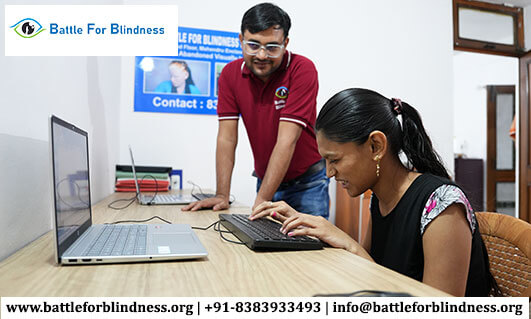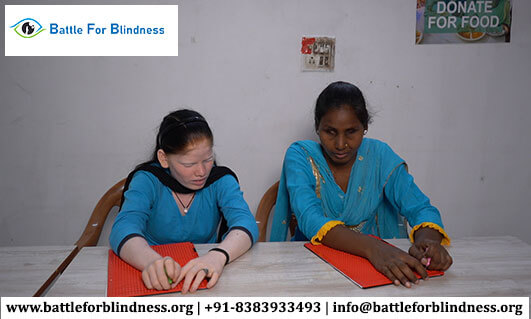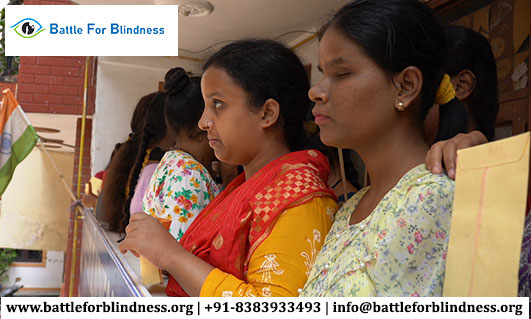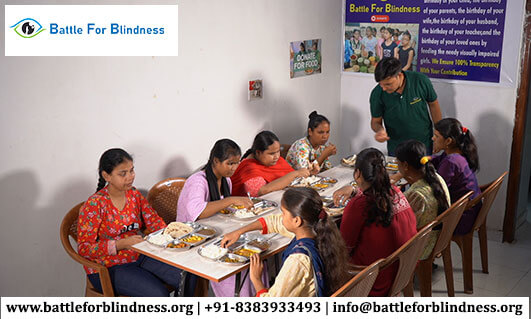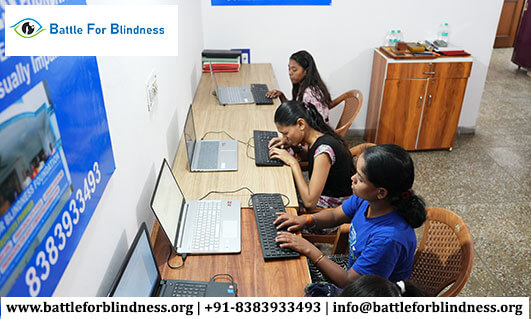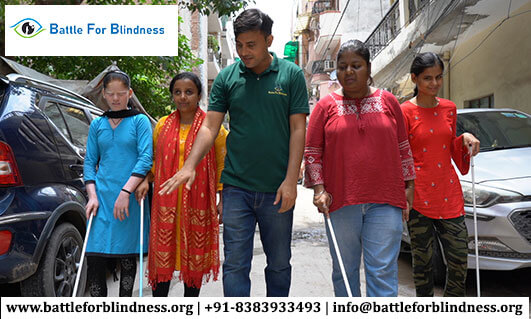
For individuals who are both deaf and blind, daily life can present unique challenges. Navigating the world without the use of sight or hearing can limit access to information, communication, and even mobility. However, advances in assistive technology (AT) have significantly improved the quality of life for the deaf-blind community, empowering them with the tools needed to achieve greater independence and participate more fully in daily activities.
In this blog, we’ll explore some of the top digital tools designed to support the deaf-blind, covering communication, mobility, and daily tasks. These innovative solutions provide accessibility and open new doors for individuals seeking autonomy.
1. Braille Notetakers and Displays
Braille notetakers and displays are essential tools for the deaf-blind, enabling them to read, write, and engage with digital content. These devices feature tactile Braille characters that translate text into Braille, allowing users to navigate documents, emails, and websites.
- Top Devices:
- BrailleSense Polaris: This is an advanced notetaker that combines a Braille display with a range of functions, including email, word processing, and access to apps like calendars and maps.
- Focus 40 Blue Braille Display: A lightweight, portable Braille display that pairs with smartphones and tablets for easy reading and communication.
These devices help deaf-blind individuals stay connected, organized, and productive, enabling them to navigate the digital world through tactile feedback.
2. Tactile Sign Language Apps
Communication is a primary barrier for deaf-blind individuals, as traditional sign language relies on visual cues. However, tactile sign language apps are helping to bridge this gap by allowing users to communicate through touch.
- Top Apps:
- TapTapSee: An app that uses the camera on a smartphone to identify objects and read them aloud. While it’s not specifically for the deaf-blind, it provides valuable feedback in conjunction with a Braille display or tactile interface.
- Tactile Sign Language (TSL) Apps: These apps help teach users the principles of tactile sign language, enabling communication through physical touch.
These apps allow for more effective communication by converting visual signs into touch-based formats, which is essential for many deaf-blind individuals who use tactile communication methods.
3. Smartphones and Tablets with Accessibility Features
Smartphones and tablets are increasingly equipped with built-in accessibility features that make them invaluable tools for the deaf-blind. These devices can be customized to provide voice feedback, Braille support, and gesture-based navigation, allowing users to communicate and access information independently.
- Top Features:
- VoiceOver (iOS) and TalkBack (Android): These screen readers provide spoken feedback for everything on the screen, helping users interact with apps, websites, and emails.
- Magnification and Color Adjustments: While primarily designed for individuals with low vision, these features can be helpful for users with limited sight.
- Siri and Google Assistant: These voice-controlled virtual assistants can perform tasks such as making calls, sending texts, and providing directions—all without the need to see or hear.
With these accessibility features, deaf-blind users can make calls, send messages, access social media, and even navigate maps without any visual or auditory cues.
4. Wearable Devices for Navigation and Mobility
Mobility is another significant challenge for the deaf-blind community. Thankfully, wearable technology has made it easier for deaf-blind individuals to navigate their environment with greater confidence and independence.
- Top Devices:
- Sunu Band: A wrist-worn device that uses ultrasonic technology to detect obstacles in the environment and provides haptic feedback to guide the user. The Sunu Band helps with spatial awareness and navigation in unfamiliar spaces.
- WeWalk Smart Cane: A modern, high-tech cane that combines the traditional white cane with smart technology. It includes a built-in ultrasonic sensor to detect obstacles above waist height and provides haptic feedback to help users avoid collisions.
These wearables can dramatically improve mobility by helping deaf-blind individuals detect objects and navigate safely.
5. Video Relay Services (VRS)
Video Relay Services (VRS) enable deaf-blind individuals to communicate with others through sign language interpreters via video calls. VRS bridges the gap by providing real-time translation of sign language through video, which is particularly useful for deaf-blind users who use tactile sign language.
- How it Works: Using a smartphone, tablet, or computer with a webcam, the deaf-blind user can connect to a sign language interpreter who can communicate in real-time via tactile or visual sign language. This service is crucial for enhancing communication with hearing individuals and those who don’t know tactile sign language.
6. Smart Home Technology for Daily Living
Smart home devices allow deaf-blind individuals to control various aspects of their environment, such as lighting, temperature, security, and even appliances. Voice-activated assistants, when combined with smart home devices, offer hands-free control and added convenience.
- Top Devices:
- Amazon Echo or Google Home: These smart speakers can be paired with other smart devices in the home and controlled via voice commands, such as adjusting the thermostat or controlling lights.
- Smart Plugs: Plugging appliances into smart plugs can make everyday tasks, such as turning on a coffee maker or toaster, accessible through voice commands or apps.
Smart home technology increases comfort, safety, and convenience, allowing deaf-blind individuals to live more independently.
7. Real-Time Text (RTT) and Captioning Tools
Real-Time Text (RTT) allows individuals to send and receive text messages during a live conversation, enabling faster communication without the need for typing and waiting. RTT can be especially useful for deaf-blind individuals who prefer text-based communication.
- Top Tools:
- Relay Services: These services provide real-time text conversations through a video call or messaging system, ensuring that conversations happen smoothly and efficiently.
- Captioning Apps: Apps like Otter.ai offer real-time captioning of spoken words, making it easier for deaf-blind individuals to participate in meetings, phone calls, or social interactions.
These tools facilitate real-time communication, improving accessibility for people who cannot rely on voice or sign language alone.
Conclusion
Assistive technology is playing a transformative role in the lives of deaf-blind individuals, offering the tools and resources needed to foster greater independence, communication, and mobility. From Braille displays and tactile sign language apps to wearable devices and smart home technology, these innovations are helping individuals navigate their environment, connect with others, and complete daily tasks with confidence.
As technology continues to evolve, it’s essential to support and advocate for the development of even more accessible solutions, ensuring that everyone, regardless of sensory impairments, can live a life of independence and inclusion. The future of assistive tech for the deaf-blind is bright, with limitless possibilities for empowering individuals to live life to the fullest.
